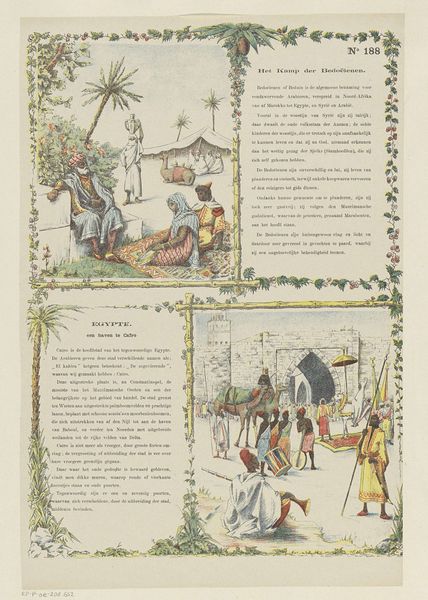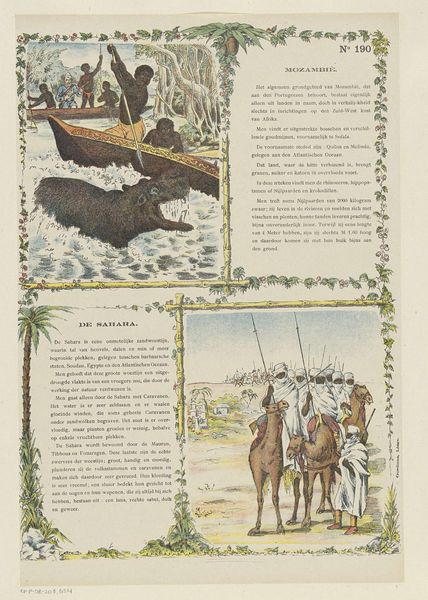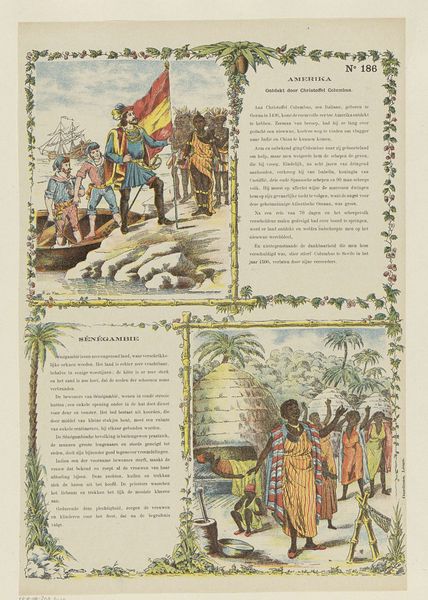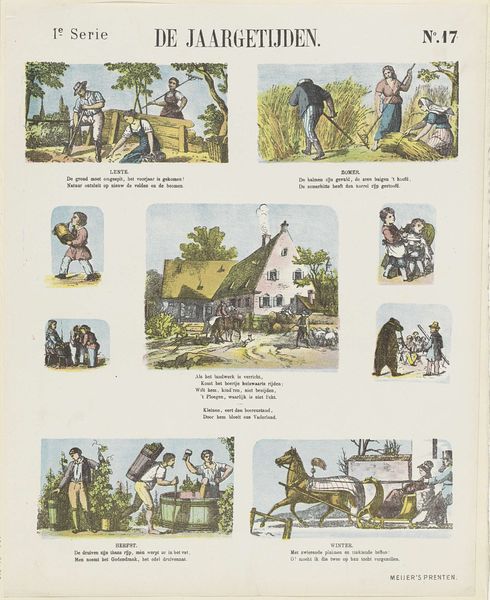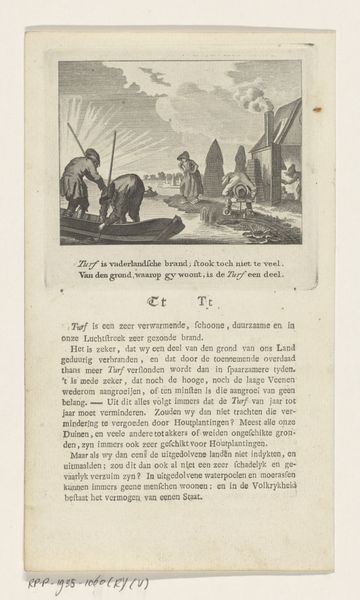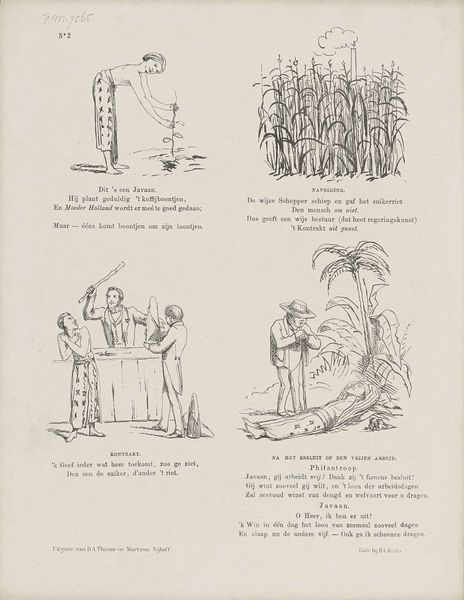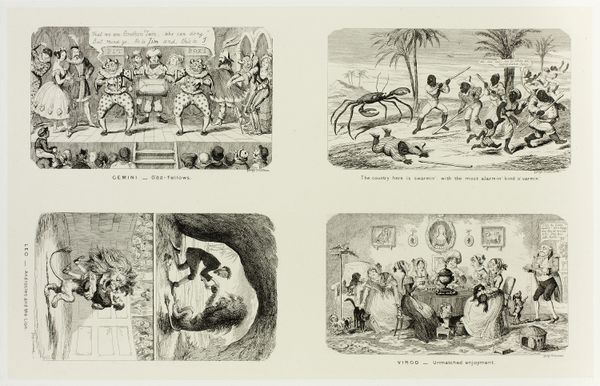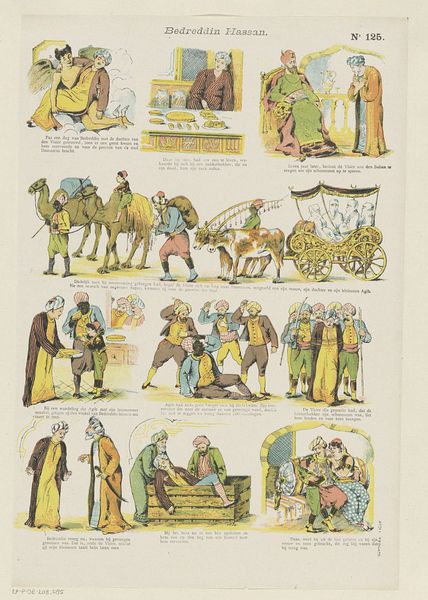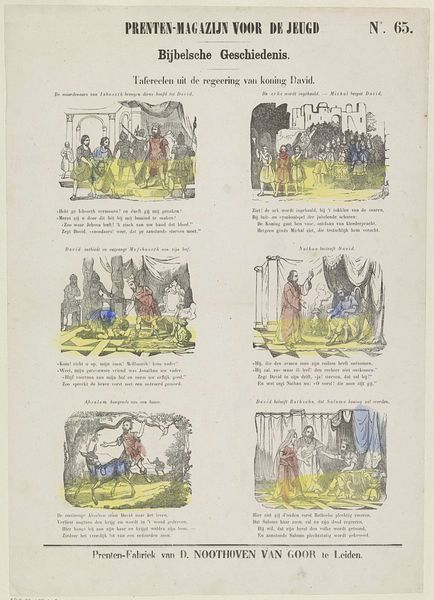
graphic-art, print
#
african-art
#
graphic-art
# print
#
landscape
#
orientalism
Dimensions: height 397 mm, width 271 mm
Copyright: Rijks Museum: Open Domain
Curator: This print, whose creation dates from 1894 to 1959, is part of the Rijksmuseum collection and bears the dual title "Het Kafferland / Egypte." Immediately, I notice a distinct duality; it's divided into two scenes. The upper portion depicts, if I understand the title correctly, life in South Africa, and below, we see an Egyptian scene, dominated by the pyramids. The composition, even with that division, feels a little crowded to me. Editor: Crowded and perhaps…simplistic? The figures lack detail, appearing almost as archetypes rather than individuals. But I agree about that sense of duality. Presenting these two locations side-by-side like this feels deliberate, potentially even comparative. How might we examine its framing of these regions during the late 19th and early 20th centuries? Curator: Absolutely. Looking at the piece through a historical lens, its Orientalist aesthetic becomes quite evident, especially in the bottom half's representation of Egypt. Consider how A. de Ker uses pyramids and camels to construct a romanticized, exotic view that possibly differs greatly from lived experiences. It certainly seems like the "Kafferland" side presents its own set of stereotypes regarding colonial understandings of African life as well, a possible reference to indigenous American narratives. Editor: Yes, and isn’t there a parallel to be drawn from that framing? Both sections, while separated geographically, converge into an artistic commentary of colonial power structures? It isn’t enough to simply appreciate these landscapes, as each setting, intentionally or not, communicates themes tied to race and governance. And let's acknowledge "Kafferland," even its name reflects historical racist attitudes of the period. The art serves as a looking glass, doesn't it, through which to evaluate cultural representation and sociopolitical dynamics inherent in the very act of portrayal. Curator: I concur. When examining pieces such as "Het Kafferland / Egypte" we must also acknowledge the colonial gaze interwoven into them, even beyond immediate aesthetics, to really unpack this era's perspectives. Editor: A sober reminder about looking and seeing.
Comments
No comments
Be the first to comment and join the conversation on the ultimate creative platform.
